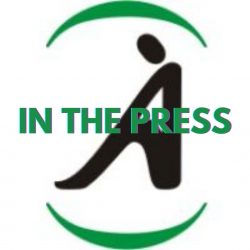What is the most wonderful thing in the world?

Indira Madambath, volunteer of Pallium India, writes:
The great epic Mahabharatha describes the battery of questions put forward by Yamaraja to King Yudhishtra. The last question was, “What is the most wonderful thing in the world?”
The answer given by Yudhishtira years ago still holds good today, especially in these pandemic days: “Hundreds and thousands die every day, but still men make little preparedness to face this reality.”
‘Challenges and Choices for Patient, Carer and Professional at the End of Life: Living with Uncertainty’ by Catherine Proot and Michael Yorke is a must-read for all involved in palliative care and end-of-life care. Death is the only ultimate truth in this world, but this topic is not discussed in open parlour, maybe due to the uncertainties about life after death. We train our minds to believe that a known devil is better than an unknown one.
This is a highly researched document, embedded with clinical and pastoral experiences. I personally feel the authors should have interviewed the underprivileged ones also who have no access to medical attention. It is almost like a textbook with subsections highlighting very thought-provoking aspects such as, how we should give dignity to death, reverence to the spiritual, emotional, and mental makeup of the patient, respect the fears in a dying person’s mind, etc. The aspect of pain has been dissected to its molecular level, accommodating not only physical, but also, spiritual, and emotional components. The take-home message of this book is the essentiality of preparedness for our last journey with a calm and composed mind, whether it is an assisted death or natural. The limitations of the medical system have been highlighted to show the absolute necessity to prepare ourselves in the twilight days. The book also emphasizes the need for communication with our near and dear ones on these matters, even though it is generally considered taboo.
Medicine is an art and science which should be synchronised in palliative care since there is no structured solution or protocol that fits all. It must be tailored to the individuals to improve their health-related quality of life and to confront death in a natural way. What I loved in this book is that various concepts in palliative care have been explained in the light of real-life stories which are scientifically analysed and compiled through interviews and personal experiences. The openness and honesty of these interviews attest a great value to this book.
I was taken aback by the opinion of one of the interviewees, “I quite like the way the Indians do it: Granddad is pretty useful as long as he can chop the kindling and if he is no good, he is put out on the pavement and he dies quite quickly because he has no purpose.” Though it is true that if someone is abandoned, India does not have an efficient hospice system to take care of them, I have always felt proud about the respect Indians give to elders and about the extended family structure that still exists in India. I felt sad that in an otherwise-excellent book, a few thoughtless words of an interviewee can convey an incorrect picture and leave every Indian reader in pain!
I come from a country where euthanasia / assisted death is considered illegal. The analysis of the various challenges faced both by the medical professionals, patients, and their caregivers and the short summary of the practices in United Kingdom, Switzerland, Netherlands and Belgium was an eye opener to me. It has opened an array of questions.
Finally, there is a peep into what these pandemic days can teach us about end-of-life care. The changed relationship with the family and caregivers, the anxieties and insecurities of the healthcare professionals are also woven into a fine fabric. In fact, it is a learning experience to establish personal and empathic contact with patients through personal protective equipment by voice modulations and hand gestures. This throws open a larger window for research on palliative care. This book will be an asset to palliative professionals and to common man to rethink on end-of-life care.
Find the book on Amazon: Challenges and Choices for Patient, Carer and Professional at the End of Life: Living with Uncertainty by Catherine Proot & Michael Yorke





